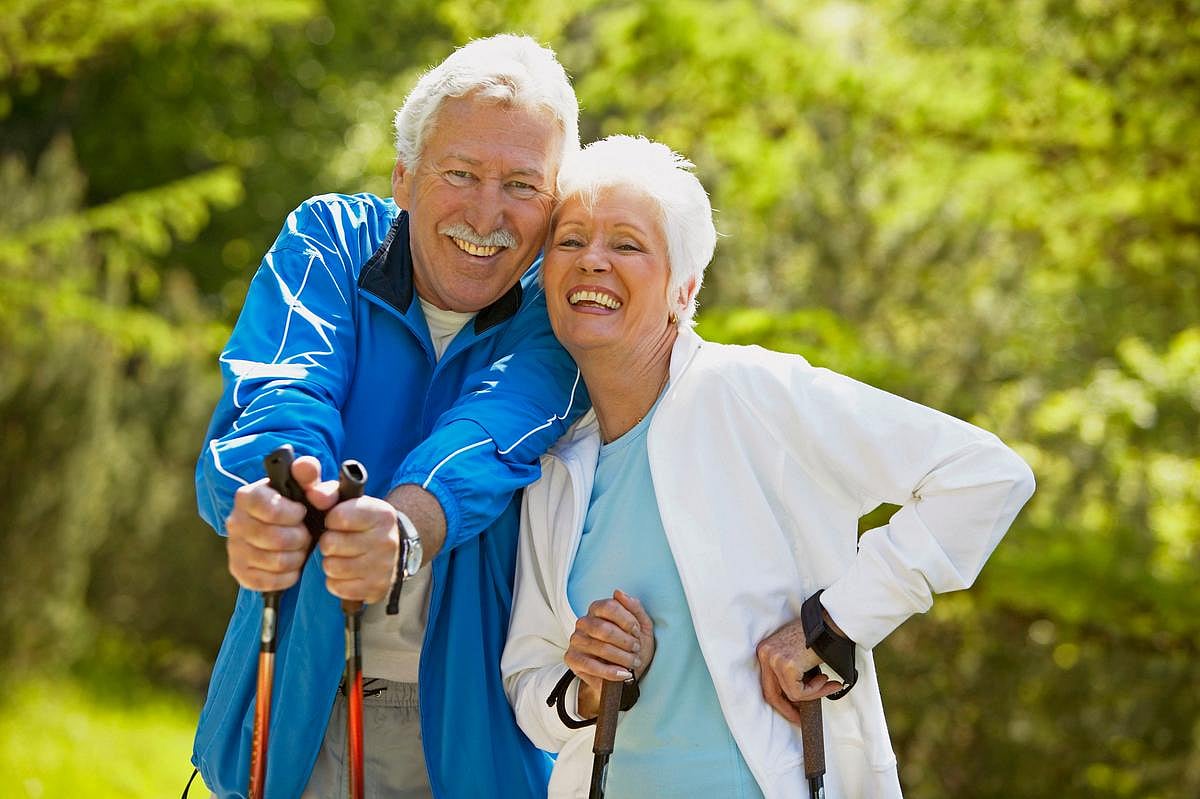Get Healthy!

- Dennis Thompson
- Posted July 21, 2025
Increasing Walk Cadence Counters Frailty Among Seniors, Study Says
Putting a little more pep in the step could help elderly folks improve their health and remain independent, a new study says.
Older adults who slightly increased their walking cadence wound up with substantial improvements in physical function, researchers reported July 17 in the journal PLOS One.
Just 14 or more extra steps per minute were enough to make a real difference, results show.
"Even casual walking had positive effects on our study participants," lead researcher Dr. Daniel Rubin, an anesthesiologist at the University of Chicago Medicine, said in a news release.
For the study, researchers recruited 102 older people living in 14 independent living retirement communities in the Chicago metro area. Their average age was 79, and all were considered either frail or prefrail.
The team randomly asked 56 of the folks to undertake a regular regimen of walking at casual speeds, and 46 to participate in a high-intensity walking program.
Essentially, the high-intensity walkers were encouraged to amble “as fast as safely possible,” Rubin said.
Overall, seniors in the high intensity walking program increased their pace to 100 steps per minute, while casual walkers averaged about 77.
Results showed seniors did better on a six-minute walk test if they increased their comfortable walking cadence by 14 steps per minute.
These sorts of improvements can mean the world to someone struggling with frailty, Rubin said.
“People who haven’t experienced frailty can't imagine how big a difference it makes to be able to not get tired going to the grocery store or not need to sit down while they're out,” he said.
Based on these results, Rubin’s team created a smartphone app called “Walk Test” that can accurately measure walking cadence. The app is specifically designed to be easy for seniors to pick up and use, Rubin said.
“We wanted to make it as low-barrier as possible so it’s easy for older adults to use without additional equipment,” Rubin said. “The people who need the most help are usually the least well-equipped to get started.”
Rubin recommends that seniors measure their usual walking pace to establish a baseline, and then try to increase their pace slightly to a level that’s brisker but still comfortable.
Metronome phone apps can help by providing a consistent beat to which seniors can match their steps, maintaining a steady elevated cadence, Rubin added.
Brisk walking also can provide a ton of other health benefits for seniors, noted researcher David Conroy, a professor at the University of Michigan School of Kinesiology.
“Physical activity has widespread, multisystem benefits,” he said in a news release.
“It increases longevity, reduces risk for many common chronic diseases such as many cancers, cardiovascular disease, and diabetes," Conroy added. "It improves brain health, improves cognitive function and reduces risk for Alzheimer's disease and related dementias. It enhances mental health by reducing anxiety and depression, improves bone health, and so on.”
And the payoffs come quickly.
"The most noticeable short-term impacts typically involve feeling more pleasant and revitalized, sleeping better, and thinking more clearly,” Conroy said.
More information
The AARP has more about the health benefits of walking.
SOURCE: University of Chicago, news release, July 17, 2025
